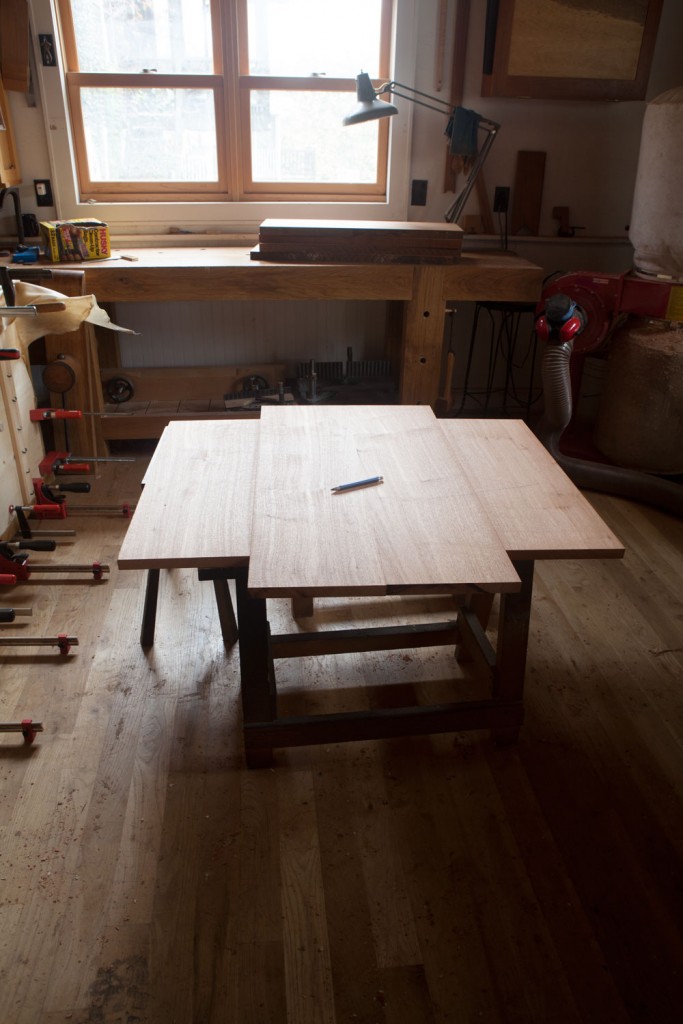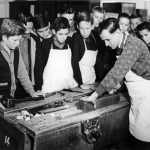We may receive a commission when you use our affiliate links. However, this does not impact our recommendations.
Being raised Protestant, guilt isn’t at the fiber of my being. But I know guilt; my wife is Catholic.
And I get a feeling that resembles guilt whenever I work with tropical hardwoods. Like many woodworkers, I’ve read a lot about C.I.T.E.S., both in the mainstream media and in the woodworking world (here’s W. Patrick Edwards’s excellent take on it).
But I’ve never thought that I knew enough to take a firm stand on the use of exotics – for every discussion of the certification process for imports, there is a discussion of the corruption behind it in some countries.
And so my default position was to work with widely available domestic species. I mean really, what’s not to love? We have no shortage of gorgeous species from which to work.
But then I started building campaign furniture.
This historical style was typically made in tropical hardwoods; teak, mahogany and camphorwood were three of the most common species used. And so, in the interest of historical accuracy, I began using some mahogany and teak. This stuff was about 50 years old and had been sitting in a warehouse; some of it I reclaimed from curb furniture.
It was gorgeous stuff. And working with it was a joy.
After a few years of research and cataloging British campaign furniture, I began to turn up a lot of examples that were made in oak, ash, walnut and birch. After reading “Woods in British Furniture-Making: 1400-1900” by Adam Bowett, I became convinced that the many of the British pieces I was studying were actually made using American white oak, black walnut and white ash.
So once, again, I convinced myself to stick with the North American species.
But then temptation reared its finely grained little head.
I got a phone call from the place that had sold me the old and perfect mahogany. They had found a stash of it in the back and would I be interested in taking it off their hands at a crazy low price?
Arrgh.
I think my next project is going to need to be building a confessional.
— Christopher Schwarz
Here are some supplies and tools we find essential in our everyday work around the shop. We may receive a commission from sales referred by our links; however, we have carefully selected these products for their usefulness and quality.











Chris, turning God’s gift of any lumber, particularly the old and perfect mahogany you described, into a piece of furniture is never a sin. No confession needed.
Ron
living here in Michigan’s U.P., I’m surrounded by Curly Maple, Cherry, and both Red and White Pine. I almost feel guilt at having all this abundance, and at very reasonable cost.
That said, a couple of months ago I saw several huge slabs of Mappa at Bell Forest Products in Ishpeming. I couldn’t resist bringing one home. Apparently this is a species of European poplar.
It seems to me the problem is not in using the wood, but is the harvesting of the wood in the first place. Once cut, not putting it to good use it might be cause for using the confessional.
Martin
I have lived in Kenya for the past 18 years and recently got offered some wood from a 60 year old factory which had closed down. It had been used as loose slats in racking. They had 900 pieces of Elgon Olive (Olea capensis), two and a half inches by one and a quarter inches by twenty four inches long. It is the heaviest wood in the world, and sinks in water! It ranks as one of the hardest woods, and one has to pre=drill to knock a nail into it.
I don’t know what I am going to do with it yet, but I know it will be difficult to work with. Frequent sharpening I imagine!
Anyone have any ideas? (Half of it will be going to a patio deck I am going to build.) End grain chopping boards? Turned ornaments? Coffee tables?
While it has it’s own political problems there is Mahogany in Fiji that was planted decades ago. Since its none native its not like using it is ecologically bad, but the Fiji government is not exactly great.